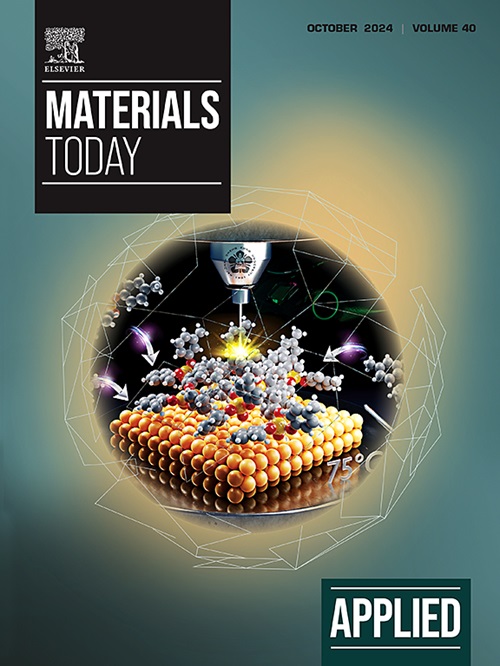Flexible ZnO nanowire platform by metal-seeded chemical bath deposition: Parametric analysis and predictive modeling
IF 6.9
2区 材料科学
Q1 MATERIALS SCIENCE, MULTIDISCIPLINARY
引用次数: 0
Abstract
The growth of zinc oxide nanowires (ZnO NWs) on metal-seeded substrates is crucial for photonics, electronics, and sensing applications. Traditionally, NWs are grown using seed sintering on rigid substrates at high-temperature. However, the rise of flexible electronics, which use substrates unable to withstand high temperatures, has shifted focus to metal-assisted synthesis methods that do not require high-temperature sintering. This method has gained increasing attention due to its compatibility with flexible substrates. This article focuses on understanding the underlying growth mechanisms and achieving controlled growth of ZnO NWs on metal seeded flexible substrates. Furthermore, a parametric analysis is carried out to elucidate the correlation among different growth conditions in the chemical bath deposition (CBD) technique. Through a meticulously planned experimental design, the study investigates the influence of different growth conditions on synthesis outcomes. This leads to the formulation of predictive models using advanced machine learning (ML) methods particularly, artificial neural network (ANN). Following validation and training, the ANN model exhibits a remarkable ability to predict synthesis outcomes, yielding R values of 0.92 for diameter and 0.96 for length of NWs. Notably, the highest aspect ratio (AR) of ∼24 is attained following the growth conditions: 25 mM precursor concentration, 60 min growth time, and a growth temperature of 95 °C. Additionally, this method of growing ZnO NWs on a metal-seeded substrate offers an alternative approach for fabricating nanodevices for various emerging applications.通过金属密封化学沉积实现柔性氧化锌纳米线平台:参数分析和预测建模
在金属种子基底上生长氧化锌纳米线(ZnO NWs)对于光子学、电子学和传感应用至关重要。传统上,纳米线是在刚性基底上通过高温烧结种子生长出来的。然而,由于柔性电子产品的兴起,其使用的基底无法承受高温,因此人们开始关注无需高温烧结的金属辅助合成方法。这种方法因其与柔性基底的兼容性而受到越来越多的关注。本文的重点是了解潜在的生长机制,并在金属种子柔性衬底上实现氧化锌纳米线的可控生长。此外,本文还进行了参数分析,以阐明化学浴沉积(CBD)技术中不同生长条件之间的相关性。通过精心策划的实验设计,该研究调查了不同生长条件对合成结果的影响。由此,利用先进的机器学习(ML)方法,特别是人工神经网络(ANN),建立了预测模型。经过验证和训练后,人工神经网络模型在预测合成结果方面表现出了卓越的能力,NWs 直径的 R 值为 0.92,长度的 R 值为 0.96。值得注意的是,在以下生长条件下,可获得 24 ∼ 24 的最高长宽比 (AR):前驱体浓度为 25 mM,生长时间为 60 分钟,生长温度为 95 °C。此外,这种在金属衬底上生长氧化锌纳米线的方法为制造各种新兴应用的纳米器件提供了另一种方法。
本文章由计算机程序翻译,如有差异,请以英文原文为准。
求助全文
约1分钟内获得全文
求助全文
来源期刊

Applied Materials Today
Materials Science-General Materials Science
CiteScore
14.90
自引率
3.60%
发文量
393
审稿时长
26 days
期刊介绍:
Journal Name: Applied Materials Today
Focus:
Multi-disciplinary, rapid-publication journal
Focused on cutting-edge applications of novel materials
Overview:
New materials discoveries have led to exciting fundamental breakthroughs.
Materials research is now moving towards the translation of these scientific properties and principles.
 求助内容:
求助内容: 应助结果提醒方式:
应助结果提醒方式:


